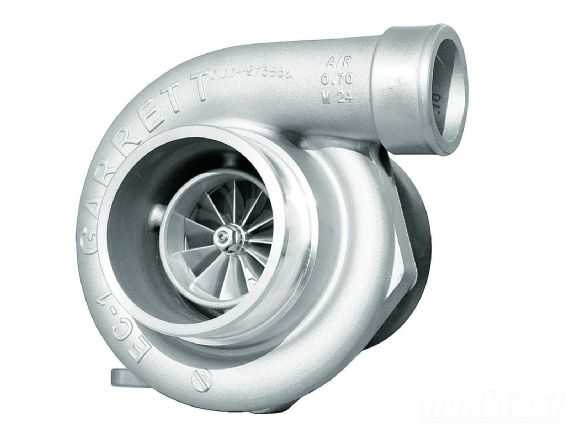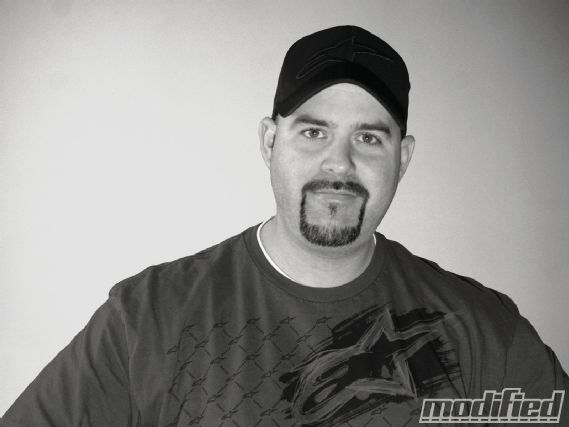Normally we respond to reader emails in our Feedback section, but this letter really struck a cord with us, so I’m going to address it in this month’s column.
 |
Learning To Talk The Talk - Tech Talk
|
Learning To Talk The Talk - Tech Talk
Let me just start off by saying that I’ve been buying your magazine religiously since August of ’08 and I’ve loved every issue since. However, being a “car guy” is hard when you know so little about cars. I know the gas is on the right, the brake is in the middle and the clutch is on the left. I know other basics (I’ve changed my own oil, jumped my car and put a doughnut on when I blew a tire), but I would really like to get into cars a little more. I have a lot of projects in my head I’d like to attempt, but knowing so little about cars is frustrating.
I just finished reading the April ’11 cover story, and it was an amazing read. The only things I didn’t understand were things like “9.2/1 low compression long-block” or “APS TSR70 snail.” I also read stories like “The Long Road Home” and “All In The Family” from the same issue, and it was bittersweet. On the one hand, it’s amazing to see how much blood, sweat and tears went into these cars, but on the other hand, it’s saddening that I don’t have a relationship like that with my car. I’d love to be able to take my car out and turn heads with it and be able to put up instead of shut up.
I was wondering if maybe you could do an issue for those of us who love cars, but don’t understand all the fancy lingo and acronyms. I would really like to read an issue of Modified that helps us noobs learn more and make our love for cars more intimate. —Chris Kuenzler
Although I can’t promise every story in this issue (or future issues) will be free of fancy lingo or confusing short-forms, I hope this glossary of car-guy terminology will at least help readers like Chris better understand the stories we throw at them each month. We tend to assume a certain level of automotive knowledge when writing our stories, and we do get emails requesting more in-depth, tech-heavy stories (which tend to have more car-geek-speak in them), as well as requests like Chris’ for more “tuning tips and stories for noobs.” We do our best to strike a middle ground, but it’s good to be reminded that some of our readers could use a little education on the language that’s so pervasive in the tuner scene.
Keep in mind this glossary is by no means exhaustive (for a more general glossary of automotive terms, check out autospeak.com), so for all you hardcore tuners and modifiers out there, please feel free to add to the list by emailing us your favorite terms. We’ll be sure to run the best one’s in next month’s Feedback section. And for all you noobs out there who want to take what you’ve learned from reading mags like Modified and apply it to modifying your own car, the best advice I can offer is to start with relatively simple jobs like installing a cold-air intake or changing your engine’s spark plugs, and in the wise words of Nike, “just do it!” Of course, “just doing it” will require some basic hand tools and the ability to read and follow the instructions provided with the parts you’re going to install.
All the reading in the world is no substitute for getting your hands dirty by working on your car; it can be an intimidating process at first, but you’ll quickly gain confidence as you successfully complete your first job or two. From there, you’ll find yourself tackling bigger and more challenging installations. Once you get over the hurdle of those first few jobs, you’ll realize that as long as you’ve got a good set of instructions (getting your hands on the factory shop manual for your car’s make and model is extremely valuable for things like torque specs and step-by-step removal/reinstallation instructions) there’s almost nothing you can’t fix or upgrade in your home garage with basic hand tools and a little (OK, sometimes a lot) of patience.
Tuner-Speak Glossary
1,320 slang term used to describe a quarter-mile drag race, which makes sense when you realize the distance covered during a quarter-mile drag race is 1,320 feet.
AFR sometimes written a/f, this refers to the air/fuel ratio within an engine’s combustion chamber right before the mixture of air and fuel is ignited by the spark plug. The ratio of air and fuel in the combustion chamber pre-ignition is a critical parameter to know when tuning the ECU or engine management system, with a/f ratios of around 13:1 being typical for normally aspirated engines and 11:1–12:1 (a richer mixture with more fuel added to protect against detonation) being typical of engines with a forced-induction system in place.
Bench Racing term used to describe trash talking among a group of racers, where they sit around discussing who’ll beat who next time they go racing together.
Binders refers to the braking system and, in particular, the calipers, which “bind” the brake pads against the rotors.
Blower slang term describing a supercharger or turbocharger. Since both are basically an air pump that “blows” or pushes compressed air into the combustion chambers of an engine, this slang term is really just a simplified description of the part’s function. When we say an engine has been “blown,” we’re not talking dirty — we’re saying it has had a supercharger or turbocharger system added to it.
 |
Turbochargers have a lot of different nicknames that may confuse newcomers to the tuner scene, including snail, hair dryer, blower, turbine, and even disco potato (which refers specifically to the GT28RS turbo).
|
Turbochargers have a lot of different nicknames that may confuse newcomers to the tuner scene, including snail, hair dryer, blower, turbine, and even disco potato (which refers specifically to the GT28RS turbo).
Boost slang term describing the extent to which the air charge entering the combustion chamber has been compressed or pressurized (via a turbocharger or supercharger) above atmospheric. Measured in PSI or BAR, normal atmospheric air pressure is 14.7 PSI, so boost refers to how many PSI above this normal level the air charge is being compressed by before making its way into the combustion chamber. The advantage of pressurizing the air charge is that a greater mass of air can be forced into the cylinder, creating the potential for a bigger explosion if more fuel is injected, increasing the power and torque potential of the engine.
Bored and Stroked related terms used to describe modifications made to the cylinder bore diameter and the length of the piston’s stroke up and down within the cylinders. If an engine has been bored, the cylinder bore diameter has been increased (also known as overboring, which necessitates using larger-diameter pistons). If an engine has been stroked, its crankshaft and connecting rods have been altered such that the distance the piston travels up and down within the cylinder has been increased. Both boring and stroking are done to increase engine displacement and therefore torque (and power) output.
Compression Ratio to determine this, you must measure the volume of the combustion chamber and cylinder when the piston is at the bottom of its stroke and then divide it by the volume of the combustion chamber and cylinder when the piston is at the top of its stroke. This will give you a number such as 10:1 compression, with higher compression ratios (say 11:1 to 12:1) increasing engine efficiency/output but also increasing the potential for detonation or “pinging” (higher-octane fuel protects against detonation, which is why most high-output, high-compression engines require it).
ECU stands for Electronic Control Unit and is a generic acronym used to describe the computer or engine management system that controls the majority of an engine’s functions, most notably (from a tuning perspective) the fuel and ignition mapping. ECM (Electronic Control Module) and EMS (Electronic Management System) are other terms used interchangeably with ECU.
 |
Learning To Talk The Talk - Tech Talk
|
Learning To Talk The Talk - Tech Talk
Gearbox term used to describe the transmission, which (if you’ve ever disassembled one) is, in fact, full of gears of all shapes and sizes.
Gutted term used to describe a car that has had its interior removed, most notably the carpets, sound-deadening matting, audio system, interior trim panels, headliner and in extreme cases even the dash and any wiring no longer required (e.g. for speakers).
ITBs short for Individual Throttle Bodies, where each intake runner has a throttle body on it, rather than there being a single throttle body controlling airflow into an intake manifold. ITBs are also sometimes called Stacks or Velocity Stacks (though, to be accurate, velocity stacks are simply the trumpet-shaped air inlet or air horns that mount to the intake side of the throttle bodies).
Knock a sharp, metallic sound produced when two pressure or flame fronts collide in the combustion chamber. This could be the result of incorrect ignition timing, incorrect air/fuel mixtures or the wrong grade (octane rating) of gas. Commonly referred to as detonation or engine pinging, the most accurate name for this phenomenon is pre-ignition.
Long-block common term describing a combustion engine, including the cylinder head and the block (which houses the pistons, rods and crankshaft); it excludes the intake and exhaust manifolds, as well as the transmission.
Oversteer term used to describe a loss of rear-tire traction, causing what is commonly called a slide or drift, where the tail end of the car skids outside the arc the driver has dialed in with the steering wheel.
Ported (and Polished) when the intake and/or exhaust ports on a cylinder head have been enlarged, smoothed or otherwise modified to improve airflow in and out of the head, it’s described as having been ported or ported and polished.
Snail slang term describing a turbocharger, which looks a bit like a snail with the inlet port wrapping around the compressor wheel at its center. Also called a blower (see earlier definition), a turbine and a hair dryer (to list a few of the nicknames given to turbochargers).
Short-block common term describing just the engine block itself (including the rotating assembly of crankshaft, connecting rods and pistons), but excludes the cylinder head and associated systems. Sometimes referred to as the bottom end.
Tubbed describes the enlargement of the wheelwells, often done on the business end of drag cars to allow for much larger drag slicks to be used for maximum grip off the line.
Twist slang term describing torque (measured in ft-lbs or Nm), which makes sense when you understand the definition of torque, or moment of force, as the tendency of a force to rotate an object about an axis, fulcrum or pivot.
Understeer term used to describe a loss of front-tire traction, causing the car to slide, skid or push onto a wider arc than the one you’ve dialed in with the steering wheel.
VE acronym for Volumetric Efficiency, which is the actual amount of air being pumped by the engine, compared to its theoretical maximum. For example, a 2-liter engine will theoretically move 2 liters of air in one cycle at 100 percent efficiency. If that same engine is actually performing at a VE of 75 percent, then it’s moving 1.5 liters of air on each cycle.
WHP acronym for the term Wheel Horsepower, or the amount of horsepower produced by an engine at the drive wheels. Normally, WHP is measured on a chassis dyno or dynamometer both for tuning purposes and bragging rights. WHP is always lower than factory-reported hp or BHP (Brake Horsepower) because it includes drivetrain losses as well as parasitic losses from auxiliary components like the alternator and power steering pump.
WOT Wide Open Throttle, or what we sometimes call matting the throttle, stomping on the go-pedal or mashing the loud pedal.
Send your feedback to dpratte@modified.com

